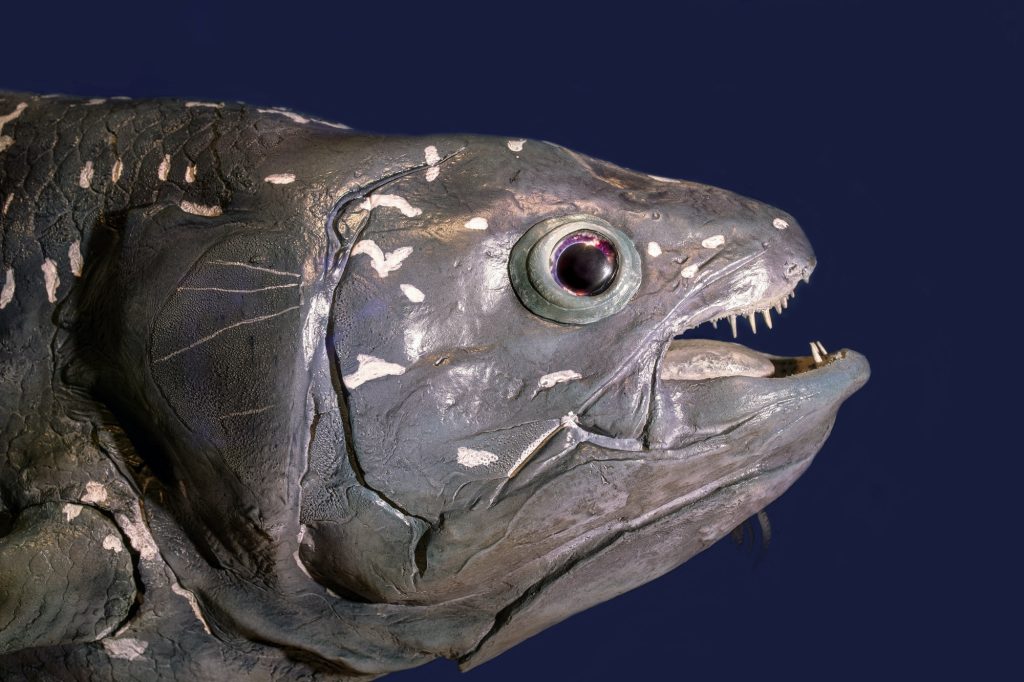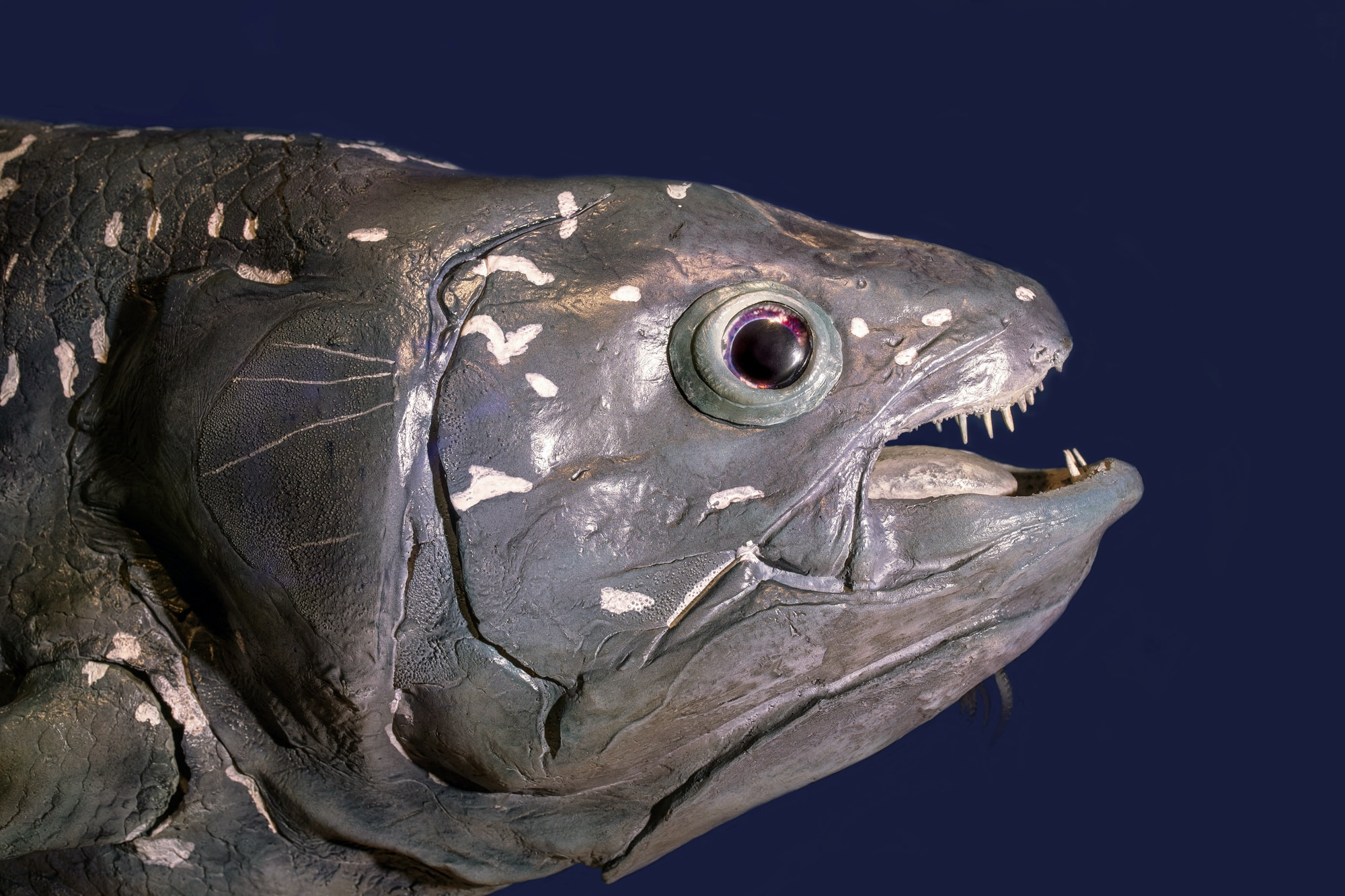Living Fossil

“Can you draw out Leviathan with a hook, or snare his tongue with a line which you lower?” [Job 41:1]
A few days before Christmas in 1938, a strange fish was caught in a net near the mouth of the Chalumna River in South Africa. Captain Hendrick Goosen and his crew thought the fish was bizarre enough to alert the local museum in the small town of East London. The director of the museum, Miss Marjorie Courtenay-Latimer, described the creature as “the most beautiful fish I had ever seen, five feet long, and a pale mauve blue with iridescent silver markings.”
Marjorie had no idea what the fish was, but knew it must go back to the museum at once. Searching through the few reference books on hand, Marjorie found a picture that, she has said, led her to a seemingly impossible conclusion. Her specimen bore striking similarities to a long-extinct prehistoric fish! She alerted the prominent South African ichthyologist Dr. J.L.B. Smith to this amazing discovery. Professor Smith came and identified the fish immediately as a coelacanth [pronounced SEE-le-kanth]. The fish would soon be called the “most important zoological find of the century.” It was nicknamed a “living fossil.”
Dr. Smith, Courtenay-Latimer, and the coelacanth became overnight celebrities. When a public viewing was arranged for one day, 20,000 visitors are said to have shown up. Over the years several other coelacanths have been caught, mostly around Indonesia.
This living fossil comes from a species of fish that was firmly believed to have lived long before the time of the dinosaurs, with the fossil record dating them back over 400 million years. They were thought to have become extinct 65 million years ago, which re-dates the dinosaurs by millions of years. How could the coelacanth supposedly disappear for over 80 million years and then turn up alive and well in the twentieth century? It had also been taught that the coelacanth was a “missing link” with its “proto legs” that were evolving into limbs.
The theory of evolution continues to piece together evidence to support a flimsy framework that new scientific discoveries do not support. The best and firmest framework for understanding our world comes from the Bible, which says, “In the beginning God created the heavens and the earth” (Genesis 1:1).






